Understanding Your Battery Switch: What It Does and Doesn't Do
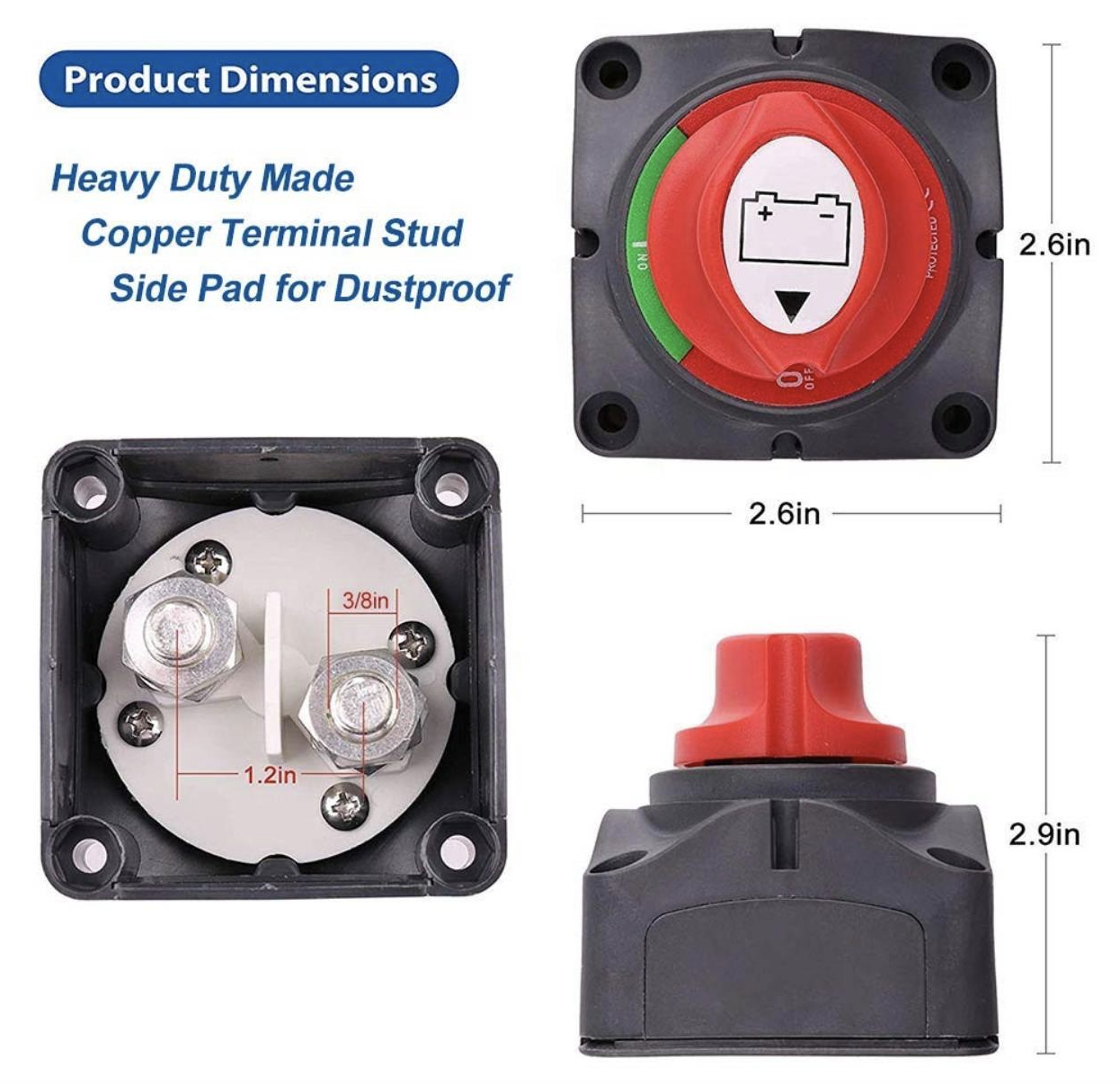
A battery switch is basic equipment for your boat, whether you run an 18’ bow rider, a bass boat or a 50’ multi-engine cruiser.
The most basic battery switch is a simple “On/Off” device designed to prevent a light or radio inadvertently left on when you leave the boat at the dock overnight from running down your batteries. It breaks the power flow to everything aboard and protects your batteries so that you can start up when you come back in a day, a week or a month.
(The only thing that should not be connected through this switch is the automatic bilge pump, which should be direct-wired to the battery so that it can always function if water gets into the bilge.)
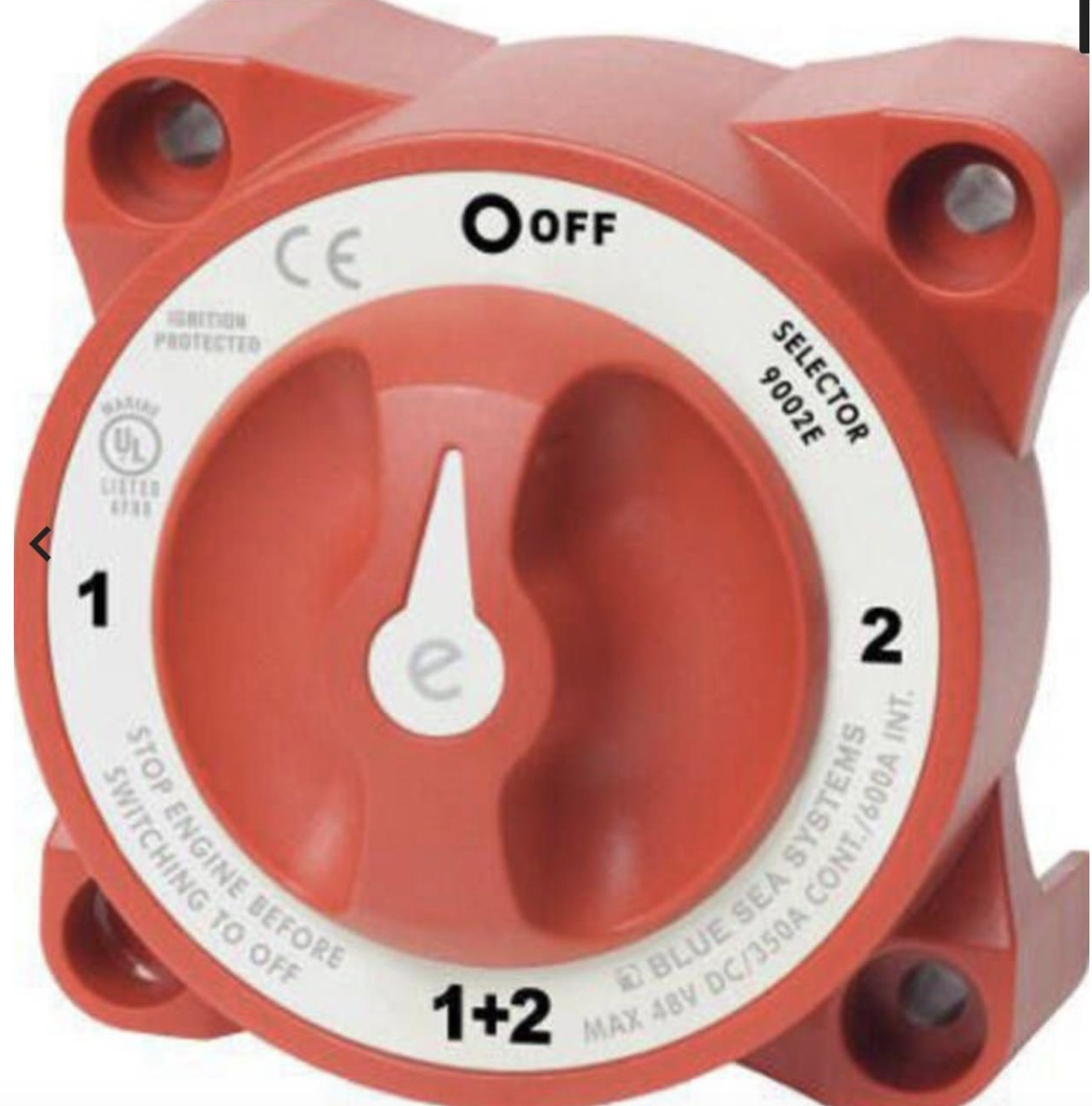
More common and useful for boats with two or more batteries, though, is the "Off/1/2/All" battery selector switch. Again, it’s a quick, handy way to shut down all battery power to everything on the boat when you’re ready to leave it at the dock, eliminating the possibility that “ghost” leaks in current will gradually drain the battery over a period of days or weeks.
But the switch also serves the purpose of separating the "starting" battery designated Battery 1 from the "house" battery, designated Battery 2, or the starter bank from house bank in larger yachts.

Battery 1 is a battery designed to deliver lots of power for a short burst—just long enough to start the main engines. Battery 2 is a deep discharge battery that handles the load for lights, refrigeration and AC. Thanks to the switch it can also send power to the starting battery should it ever go dead and be unable to start the main engine.
Boats with internal combustion generators usually have a third battery dedicated to starting it, as well. On larger boats with a bow thruster, there may be a dedicated battery for the thruster, and perhaps another for an anchor windlass. These are not usually tied in to the engine starting system or to the house battery system.
In normal operation, you set an engine/house switch to 1 for starting and to 2 when the engine is not running, and you are using power from the house battery for lights, MFDs (Multi-Function Displays), trolling motors or other electrical devices. You could set it to “Both”, but since this could draw down both battery banks to the point you can’t start the main engines, this is not a good practice.
When underway with the main engines running, setting the switch to “Both” or “All” will shunt charge from the alternators to both battery systems, gradually bringing them back to full charge.
While it’s true that setting the switch at “All” cuts the charge to each battery in half in most setups, it’s also true that if you leave the switch in that position when trying to start next time you tap the combined power that has been put into both batteries so you come out ahead.
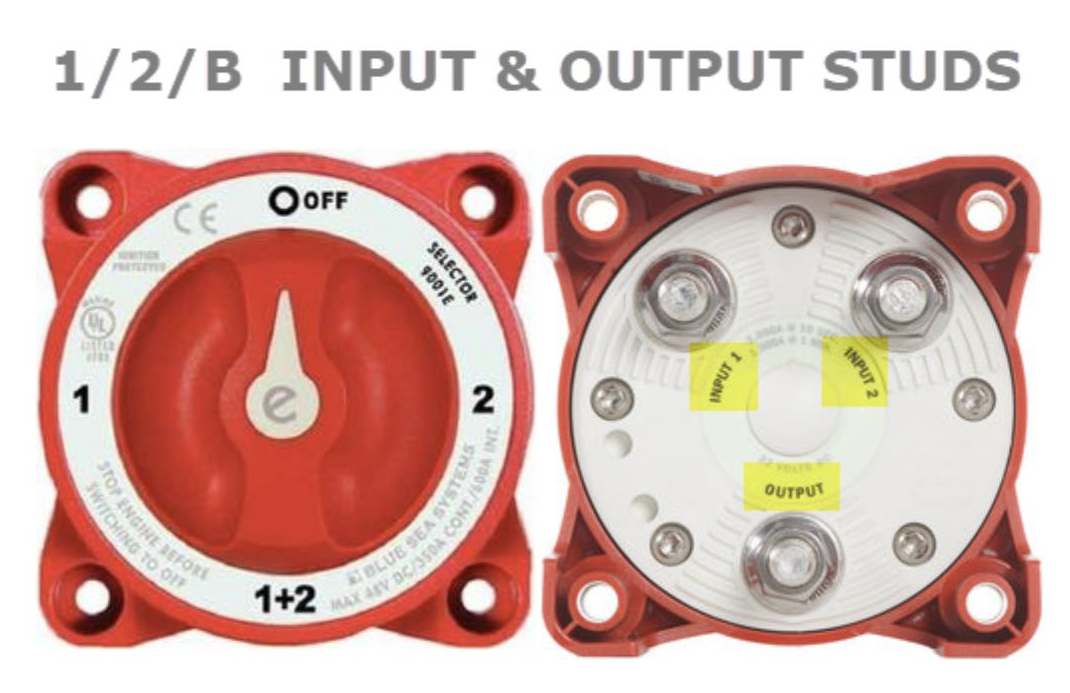
Turned to “All” the switch delivers the power from both batteries in parallel to assure the engines can be started, even when each individual battery system may not be at full charge.
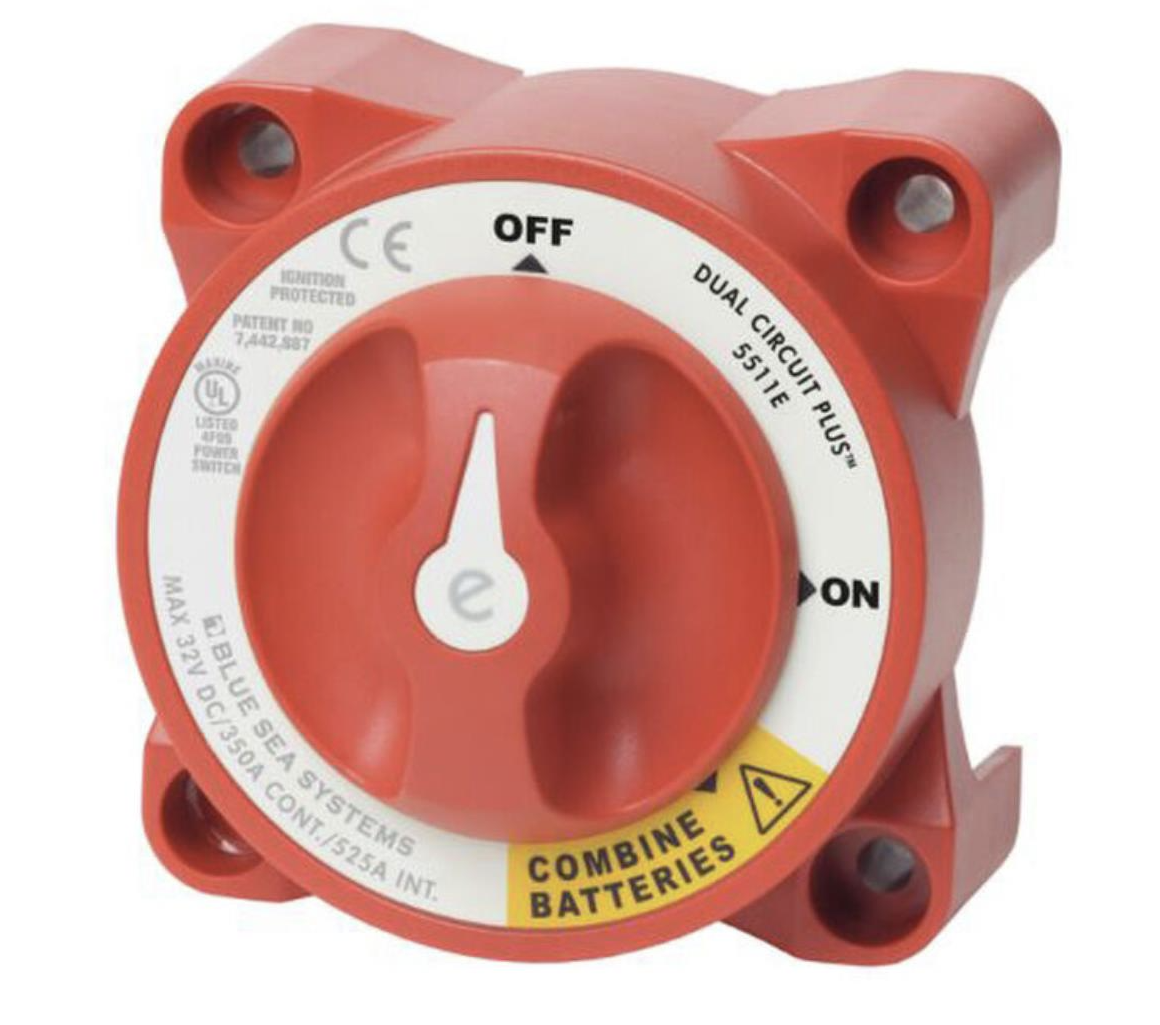
Avoid Power “Parasites”
Just remember to keep your starting and genset batteries sacred, with no extraneous wiring for parasitic loads like MFD’s, radios and the like, which can draw them down when you need them most. Connect anything that does not HAVE to run to the house battery. That way, if it goes dead, you’re not dead in the water.
Automatic Charging Relays
The use of Automatic Charging Relays (ACRs) or Voltage Sense Relays (VSRs) can make sense on some boats

These devices automatically connect two batteries in parallel when a charging voltage is detected and disconnect them once a pre-determined voltage is reached. This setup allows the alternator to
directly charge the house bank, which typically requires more charging, and then automatically combines the engine battery to receive a charge when needed. Blue Sea sells a combo pack battery switch and ACR for about $185. Defender Marine

The Right Battery Selector Switch
Make sure the “load” indicated for the battery switch you choose will handle the load you will be putting through it.
Add up all the likely loads particularly on the house side and you’ll often find that a larger capacity switch is a good investment. Even the higher capacity models are under $100 in most cases, though some with the “Alternator Disconnect Field” feature to protect alternator diodes in the event the switch is accidentally turned to the “off” position while the engine is running are higher: Perko’s 380 continuous amp model is around $200; www.Perko.com.
Alternative Power Sources for Your Boat
A multi-bank charger is standard equipment on smaller boats without generators, and is a good extra to have aboard even in those that do have generators, allowing you to get your batteries back up to full power anytime you can plug into AC power at a dock. If everything is functioning correctly, this charger should rarely need to be plugged in, though anglers with dedicated trolling motor batteries, sometimes three of them, do use these chargers every night.
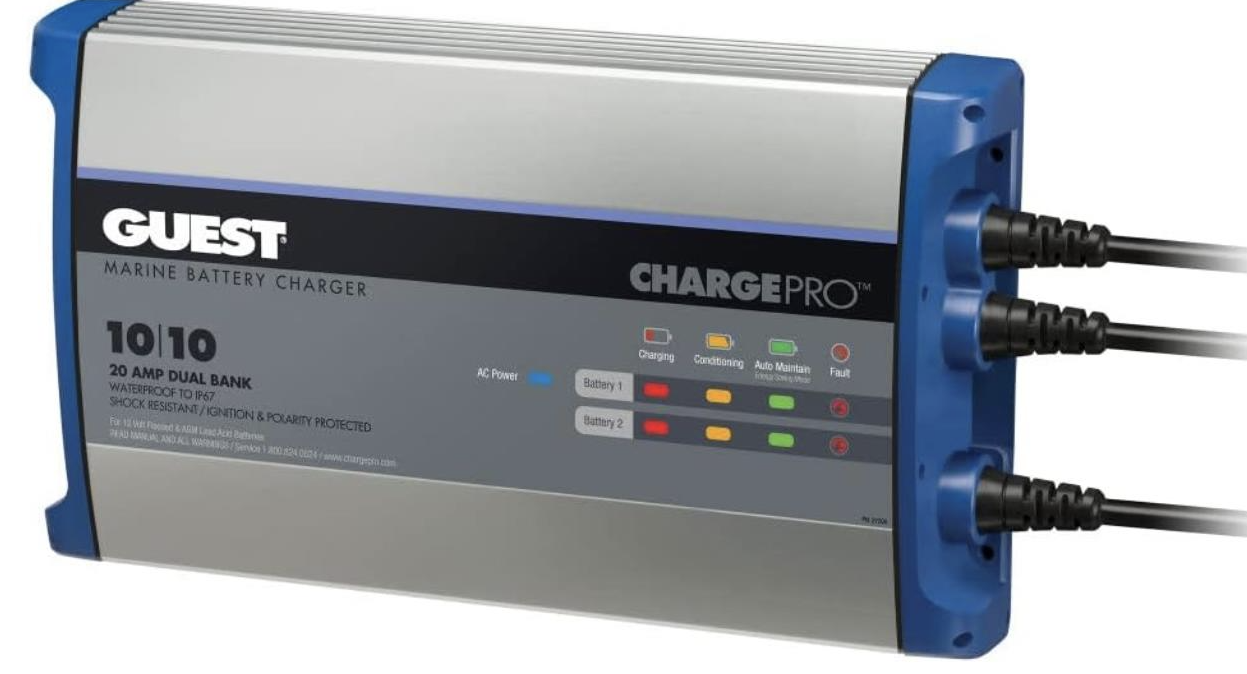
Additionally, keeping a pair of jumper cables on the boat is advisable. These can be useful in case the genset battery gets depleted, allowing you to start it using the main start battery. Make sure the cables are long enough to reach between batteries, of course. These cables can also allow connecting your batteries to another boat so you can crank up when all batteries are dead—or to help another mariner in need.